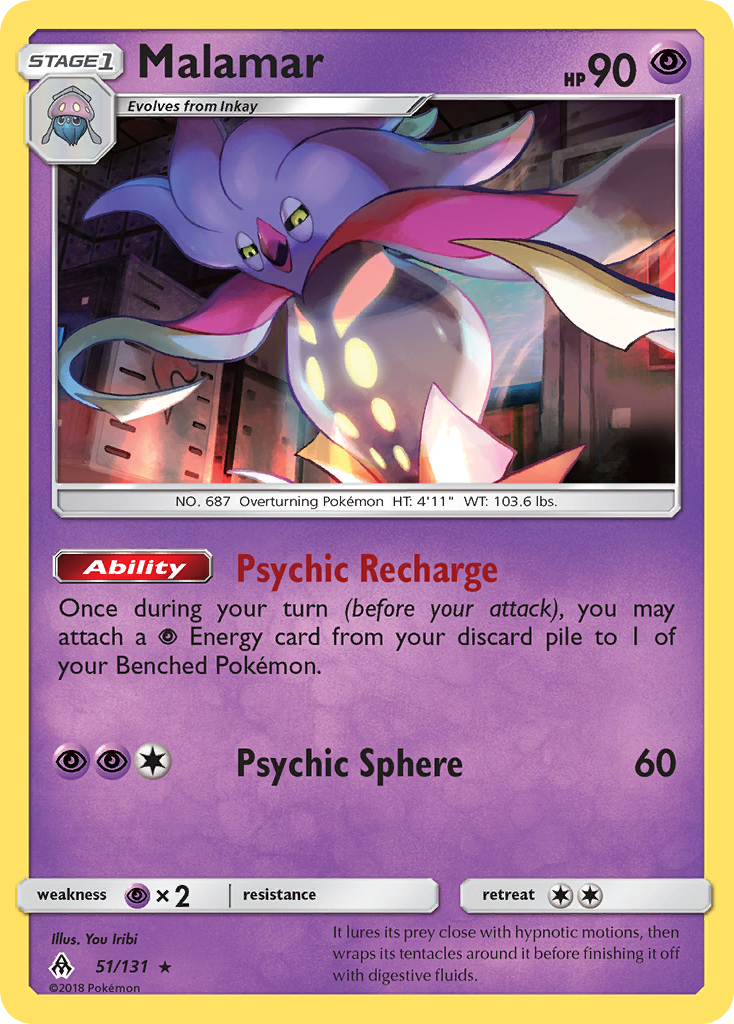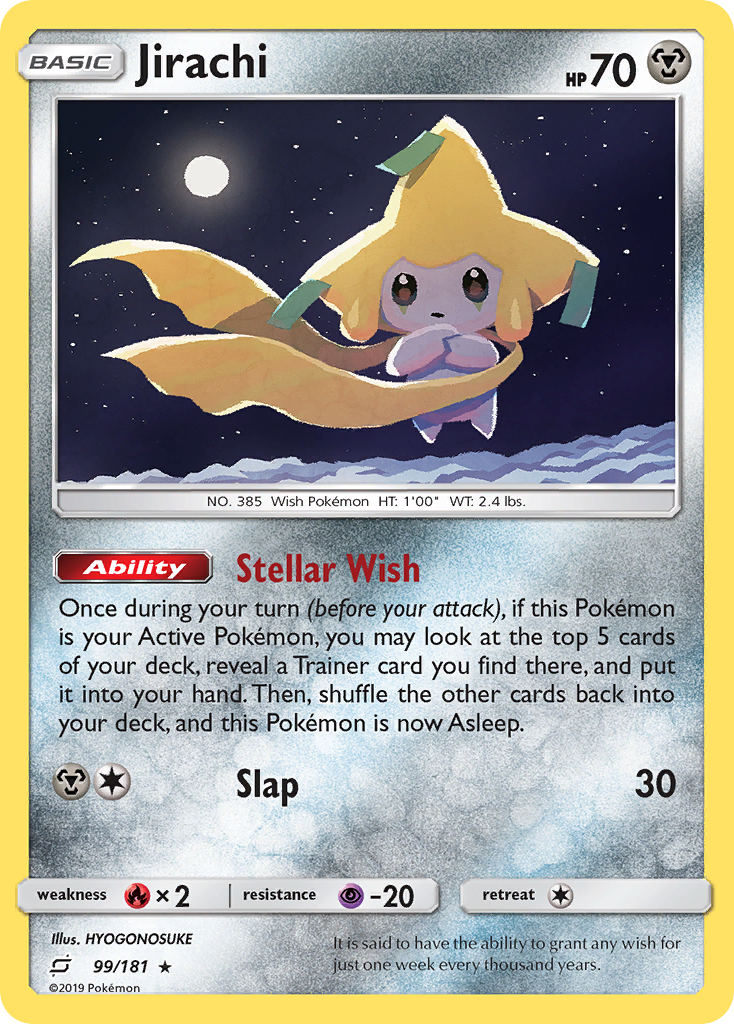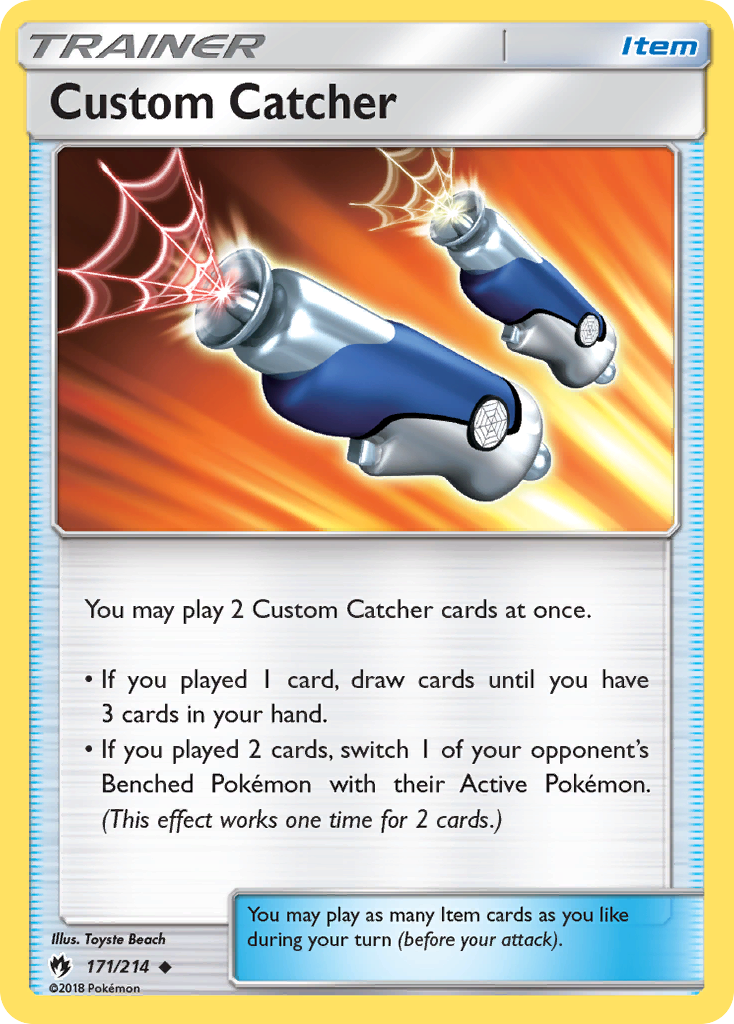Worlds Malamar Survey
Hey guys, Rukan here. First of all, apologies for this article's delay. I lost electricity for a few days and could not test as much as I wanted to for this article.
Today's article covers Malamar, so I wanted to make sure I could squeeze in as much testing as possible. But before I move on, I want to set some expectations. This article aims to identify core issues with the Malamar archetype and suggest ways to remedy them. But despite the improvements, I would not consider any of the final lists in this article worthy of pushing Malamar into one of the top 3 archetypes of our Worlds format.
Malamar's position after this rotation reminds me of Zoroark-GX's position last rotation. Both decks lost a lot of consistency tools but remained popular. Zoroark still earned a lot of Day 2 placements after rotation last year due to its sheer popularity but ultimately earned below average conversion rates. I expect the same to happen to Malamar. When you look at Day 2 conversion rates at regionals, the "best" archetypes usually score Day 2 conversion rates between 15-30%. The rest of the format tends to score 15% or lower. Meanwhile, Zoroark scored about 7% day 2 conversion rates for the first few events after rotation, and so I expect Malamar to perform roughly the same. Perhaps after the meta settles, Malamar can start to tech appropriately for the rest of the field. But as of right now, I think Malamar's suboptimal consistency engine limits it from securing a top position in the meta off the back of the archetype's innate power level.
With expectations in check, let's finally dig into the meat of the article. I went through several phases of testing for Malamar. First, I dedicated some time optimizing the consistency engine, which I discuss in the first half of the article. The middle of the article discusses more gameplay related concerns with a particular focus on Prize sequencing in the new format. And the final part of the article proposes two Malamar lists to play, based on the results and conclusions from the previous two sections. Without further ado, let's dive into consistency testing results.
Testing Log 001 - Getting a Feel
Objective: Try to determine the main limiting factor for setting up a turn 2 attack.
Conclusions: Run Jirachi
I started testing Malamar's consistency months ago. At first, the results seemed promising.
After a few solo test hands, I immediately came to one conclusion: I need more Basic Pokemon. Prior to rotation, I searched out Inkay more readily, and thus I built my lists to conserve Bench space whenever possible. If you watched me on social media back then or read my past articles, you know I was against cards like Jirachi and Marshadow as they consumed a Bench slot for relatively slow or minimal card advantage. But that changes with the rotation.
While I could reliably find three Inkay on my first turn pretty reliably before rotation, I find myself making do with two Inkay post rotation. With three Inkay, I could comfortably attach Escape Board to one Inkay and use it as a pivot while I evolved the others into Malamar. In scenarios with only two Inkay, I want to find an additional basic Pokemon to serve as my pivot slot. And Jirachi fills that role better than any other Pokemon.
Now I need to determine the optimal number of Jirachi and the relative value of other consistency cards.
A Core List
From there, I built the core consistency engine. It contains eight empty deck slots that I tweak in all the subsequent testing logs. In the next section, I try a few different combination of cards in the remaining eight slots to determine which cards offer the most value.
Pokémon (16)
- 4x Malamar (FLI #51)
- 4x Inkay (FLI #50)
- 4x Jirachi (TEU #99)
- 2x Giratina (LOT #97)
- 1x
Ditto Prism Star
- 1x Mew (UNB #76)
Trainers (28)
Testing Log 002 - Consistency Benchmarking
Experiment 01 - Simple Spell Tag
List: Core List +4 Acro Bike, +4 Spell Tags
Results: 75% turn 2 attack rate in sample of 20 hands
Comments: Started simple, and got some promising results! Remember, solo testing assumes no disruption from the opponent. So in a real game, I would not expect swing 75% of games by turn 2. Either way, 75% with no disruption represents a solid number and it lets me know that the inclusion of four Jirachi paid off.
Experiment 02 - Fewer Jirachi
List: Core List +4 Acro Bike, +4 Spell Tag, -2 Jirachi, +1 Dedenne-GX, +1 Pokégear 3.0
Results: 50% turn 2 attack rate in sample of 20 hands
Comments: Next, I wanted to determine if I could get away with fewer Jirachi, especially as benching a Jirachi makes the Prize race in Malamar mirrors much worse. The results were very poor, only 50%. To some extent I blame this drastic decrease on variance, but the test results made it clear that I definitely want to max out my Jirachi count.
Experiment 03 - More Basic Pokemon
List: Core List + 4 Emolga, +4 Spell Tag
Results: 50% turn 2 attack rate in sample of 20 hands
Comments: So if 4 Jirachi helped, what if I ran more basic Pokemon? I did not expect improvement, and I did not see improvement. Dumb experiment in hindsight. Emolga may guarantee a target for Pokémon Communication but generally, you gain more consistency by running cards with a chance to access a variety of options than cards that guarantee a single option.
Experiment 04 - Zebstrika
List: Core List + 2-2 Zebstrika, +4 Spell Tag
Results: 65% turn 2 attack rate in sample of 20 hands
Comments: Emolga offered negative value, but how about Zebstrika? Zebstrika performed much better, but worse than simple quad Jirachi. At this point I settled on a four count of Jirachi. I did not bother testing three Jirachi yet, but I expect marginal difference and would rather spend my time elsewhere.
Experiment 05 - Order Pad
List: Core List + 4 Order Pad, +3 Spell Tag, +1 Pokegear 3.0
Results: 75% turn 2 attack rate in sample of 20 hands
Comments: Next, I wanted to see if Order Pad could outperform Acro Bike. Order Pad does not risk burning precious Inkay, Malamar, or Custom Catcher. In my experience, it performs better in the late game for setting up that final Custom Catcher for game. I cut a Spell Tag for an extra Pokegear 3.0 to capitalize on this, as Order Pad made Spell Tag more searchable. It turned out to be as consistent as Acro Bike in terms of early game setup, despite the coin flip nature of the card. Makes sense when you think about it — Acro Bike frequently whiffs what you need, sometimes burning key resources in the process.
So to summarize, I prefer Order Pad to Acro Bike now. Tests indicate that Order Pad offers comparable consistency to Acro Bike in early turns and I generally prefer Order Pad in the late game. Acro Bike lost a lot of value with rotation when you think about it. We lost Rescue Stretcher, so discarding a Pokemon hurts a lot more than ever. We also lost Ultra Ball and Tapu Lele-GX, so each individual card slot in your deck offers less flexibility. Before rotation, the choice of two cards were more likely to offer more options than they do after rotation. Finding a Mysterious Treasure or Ultra Ball could get you a Supporter or a Pokemon. Now I play Acro Bike and often find I either get the exact card I want or I do not, because I run fewer cards to find the card I want. Order Pad, in contrast, gained value with rotation. I can Order Pad for Custom Catcher after all.
A Brief Argument for Custom Catcher
That more or less concludes my discussion on consistency testing. But before I move onto matchups, I want to briefly mention why my core list included four Custom Catcher, as I noticed a lot of players cutting or talking about cutting Custom Catcher from Malamar for more consistency. Let's take a brief moment to discuss why I advise four copies of Custom Catcher in any deck, including Malamar.
This concludes the public portion of this article.
If you'd like to continue reading, consider purchasing a PokeBeach premium membership! If you're not completely satisfied with your membership, you can request a full refund within 30 days.
Each week we post high-quality content from some of the game's top players. Our article program isn't a corporate operation, advertising front, or for-profit business. We set our prices so that we can pay the game's top players to write the best content for our subscribers. Each article topic is carefully selected, goes through multiple drafts, and is touched up by our editors. We take great pride in our program!





